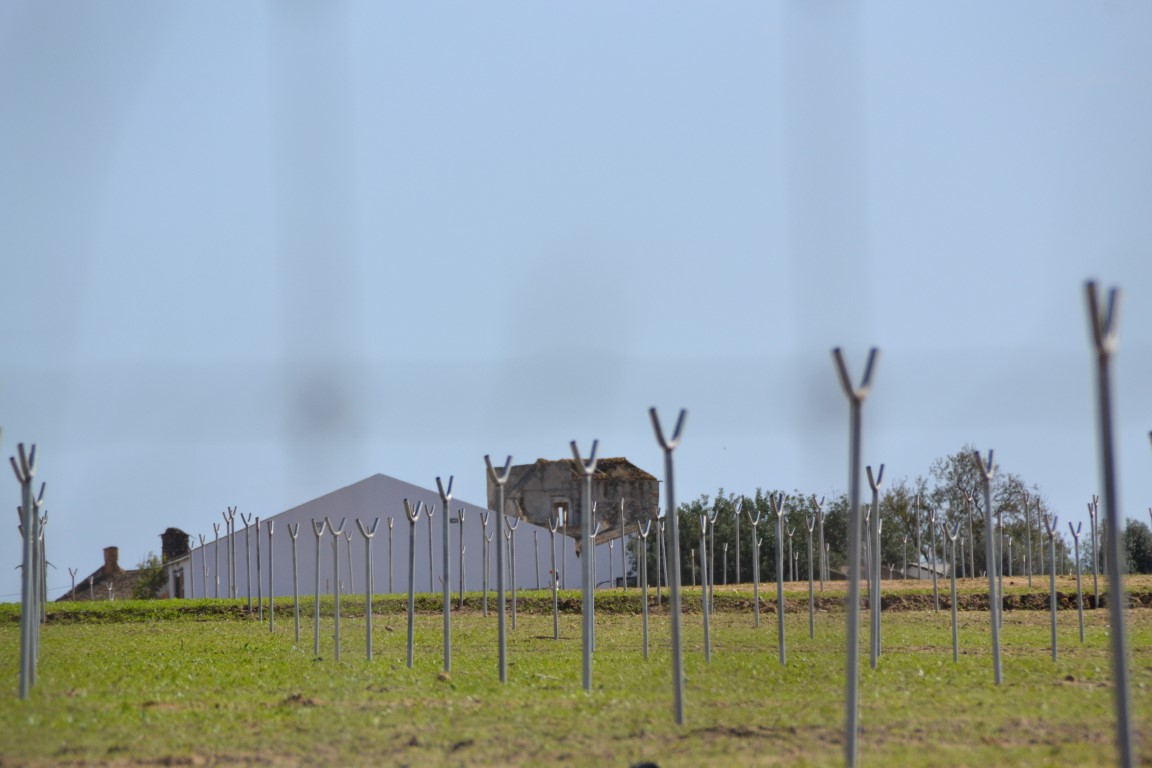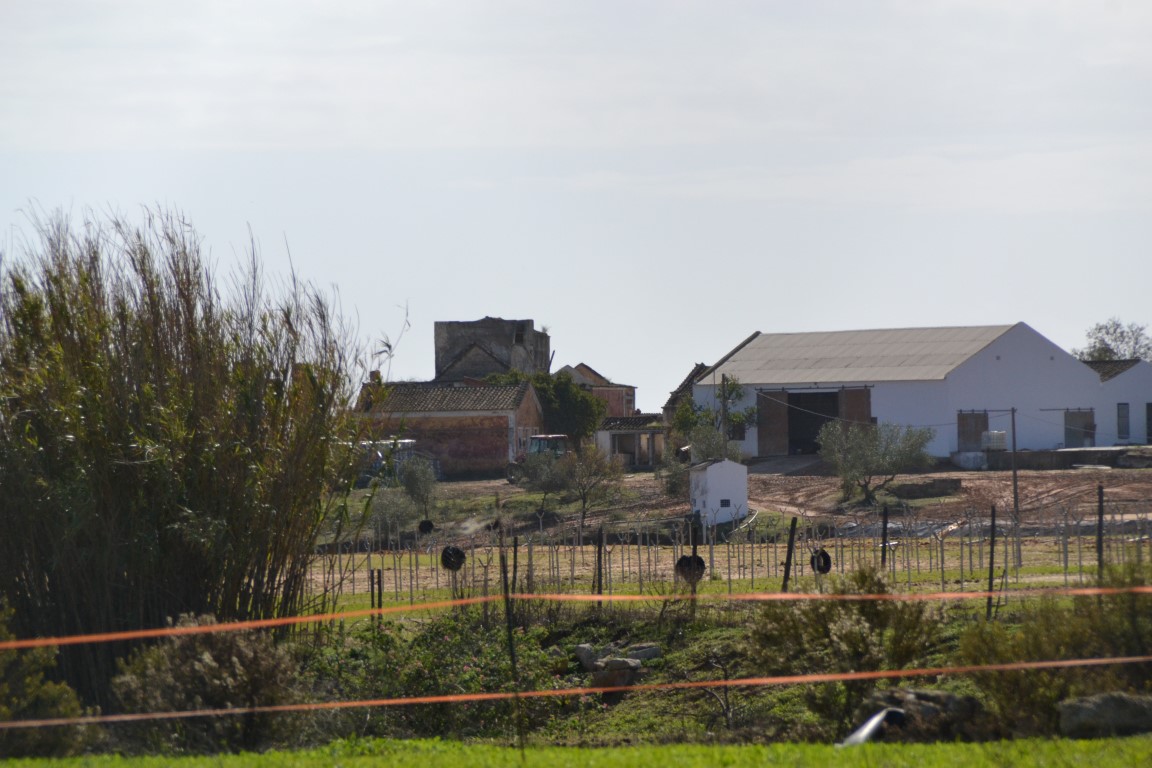 At the end of last year, was reported that, in the place where the Roman city of Balsa once existed, in the Quinta da Torre d'Aires area, in Tavira, greenhouses were being built to cultivate red fruits. However, what posed a threat is now helping to reveal the past, as a team of archaeologists hired by the agricultural company has been working on the site since the middle of this year.
At the end of last year, was reported that, in the place where the Roman city of Balsa once existed, in the Quinta da Torre d'Aires area, in Tavira, greenhouses were being built to cultivate red fruits. However, what posed a threat is now helping to reveal the past, as a team of archaeologists hired by the agricultural company has been working on the site since the middle of this year.
Like Sul Informação advanced in height, the work was embargoed, as it did not have authorizations from the CCDR and the Regional Directorate of Culture, which were necessary as it was located in an area of REN and classified heritage.
Following this embargo, the company contacted the Regional Directorate of Culture, «which made the issuance of its opinion on the possible licensing of the agricultural operation conditional on the prior carrying out of preventive archaeological work, of diagnosis of the existing remains on the land and its state of conservation , through systematic ground clearance across the entire surface of the intervention area, the carrying out of geophysical surveys (a complementary means of non-intrusive diagnosis), the carrying out of control surveys and the georeferenced survey of all visible archaeological remains», he revealed this week the Regional Directorate of Culture in a statement.
According to the entity, “the lessee hired a specialized team, including archaeologists with experience working in contexts from the Roman period and advised by recognized specialists in the study of that period. The archaeological works were authorized by order of the DGPC, dated 02/06/2016, and are currently still ongoing».
The importance of these archaeological works is greater because, according to the Regional Directorate of Culture, “for the first time in almost four decades, after the opening of the administrative process for the protection of the Roman City of Balsa at the Directorate-General for Cultural Heritage (in 1977), 16 years after the classification of parts of the old city as a Building of Public Interest (in 1992) and five years after the creation of the respective Special Protection Area (in 2011), scientific work with a multidisciplinary, extensive and innovative character is ongoing on the farm. of the Torre d'Aires».

These works are being directed by archaeologists Vítor Dias and Jorge Freire, with scientific coordination by professors João Pedro Bernardes, from the University of Algarve, and Vasco Mantas, from the University of Coimbra, and including prospecting works carried out by Helmut Becker (1st phase) and Cornelius Meyer (2nd phase), two recognized specialists in geophysics applied to archeology.
“These archaeological works will finally make it possible to obtain a solid documental base to be able to reconstruct the urban structure of this site”, adds the Regional Directorate of Culture.
Throughout the research, preliminary reports will be presented, with a summary of the results obtained, and, at the end, a final report will be presented «with the interpretation of the data and the identification of the location of the built-up areas, walls, roads, patios, squares and other characteristic structures of Roman urbanism».
These reports will allow the Regional Directorate of Culture of the Algarve «to carry out an assessment of the impacts of the agricultural operation on the archaeological remains and to determine the corresponding measures to safeguard the remaining remains of the Roman city of Balsa».
One of the preliminary reports, referring to an area of 21 hectares in the northern part of the property, revealed “the total absence, in that area, of preserved remains of the Roman city”. For this reason, the Regional Directorate of Culture issued a “favorable opinion conditioned” on the licensing of an agricultural project, related to the installation and use of greenhouses in that location.
This opinion “with conditions” implies that the works to be carried out at the site have archaeological monitoring and that “if the appearance of archaeological remains justifies it, any works are suspended (the project foresees the allocation of the subsoil to a maximum depth of 40 cm for irrigation ditches)'.
In the statement sent to the newsrooms, the Regional Directorate of Culture says that «the conditions are finally met for, based on concrete data (ie 'empirical evidence') of the geophysical maps, the rigorous mapping of the dispersion of materials on the surface of the land and structures identified, resulting from the archaeological intervention now in progress, to be able to redefine the limits of the classified property».
To this end, the entity will propose "soon" to the DGPC the "opening of a procedure to expand the classification of the 'Roman Archaeological Station of Light' as a Site of Public Interest, covering all areas where there are traces effectively documented by the works archaeological, defining the restrictions to which land use should be subject, and, simultaneously, proceeding with the delimitation of a new ZEP, also defining land use restrictions».
The Regional Directorate of Culture concludes the note with a wish: «that this safeguard action will result in a project of scientific research and development of the site, involving the university and the central and local administration, thus putting an end to the destruction, which occurred in a still recent past, of this important city of the Roman Empire».


















Comments